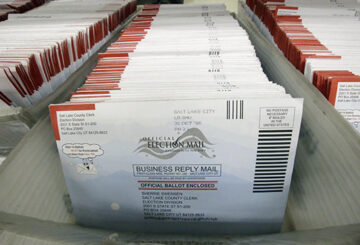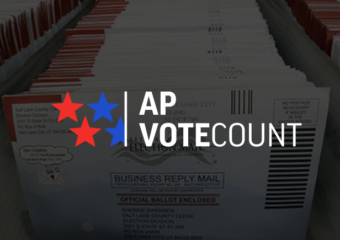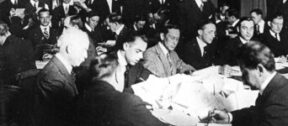
AP’s essential role in elections
AP is the authoritative source for information about elections in the United States.
With a history of accuracy dating to our first vote count in 1848, AP is the go-to source for trustworthy and reliable information every election night. AP has unmatched expertise in counting the vote and declaring winners, which drives the comprehensive coverage of election results we provide to news organizations, customers and digital news audiences around the world.
Counting votes
In the American system of government, elections are administered most directly by local officials. There is no single government agency or federal commission that tallies those results and says who has won the most votes. That’s a role AP has filled in the democracy since 1848, a mere two years after the founding of the cooperative.
Calling races
AP declares winners in thousands of races in an election year, starting with the White House and reaching down the ballot to call every seat in every state legislature. In 2020, AP’s declarations were correct in every race for president, governor, U.S. Senate and U.S. House – and 99.9% accurate overall.
Explaining the electorate
AP VoteCast is a wide-ranging survey that uses an innovative methodology designed for how voters cast ballots in modern U.S. elections to yield a deep and accurate portrait of the electorate.
The Associated Press
How we count the vote
AP doesn’t rely on crowd sourcing or technology short cuts to count the vote. Instead, we employ a network of local reporters who have first-hand knowledge of their states and trusted relationships with county clerks and other local officials. These reporters collect vote results at the source: voting precincts and county election offices. We match those results to data posted on county and state websites and provided via electronic data feeds, conducting an intense series of checks and verifications to ensure the numbers we publish are unfailingly accurate.

How we call races
AP’s Decision Team starts with research – from voter demographics to details on early and advance ballots cast to a review of political issues and candidate backgrounds — that might affect the outcome of a races. That’s followed after polls close with in-depth analysis of AP’s vote count and results in major races from our AP VoteCast survey. Only when completely confident the leader cannot be overtaken by trailing candidates will AP declare a winner. In 2020, AP declared Joe Biden the winner of the presidential election at 11:26 a.m. ET on Saturday, Nov. 7.


AP Vote Count
For more than a century, AP has done the hard work of collecting vote results from local election officials and tabulating them in real time so that America and the world can know who is leading … and who has won.

AP VoteCast
We meet voters where they are by conducting AP VoteCast by mail, phone and online, using an approach designed for how America votes today and how it will increasingly vote into the future: early, absentee and by mail.

Election research
AP’s full-time elections research staff works year-round to ensure the journalists counting the vote and declaring winners – along with our member news organizations and election service customers – know as much as possible about what to expect once Election Day arrives.

Transparent reporting
It’s not enough to only report the vote count results and declare winners. AP’s election coverage is centered on showing our audiences how we arrived at those facts, including in-depth explanations of the analysis that leads to our decisions to declare winners.




Election coverage
AP’s footprint
With journalists reporting from state capitols around the country, plus political reporters in key states nationwide and a robust bureau in Washington, AP has the staff required to provide insightful election coverage in all media formats: text, photo, data and graphics, video and live video.

Debunking misinformation
Fact-checking, a central function of AP for decades, has never been more important. Our campaign coverage includes strong accountability journalism and a robust fact-checking effort that combats misinformation with facts.



